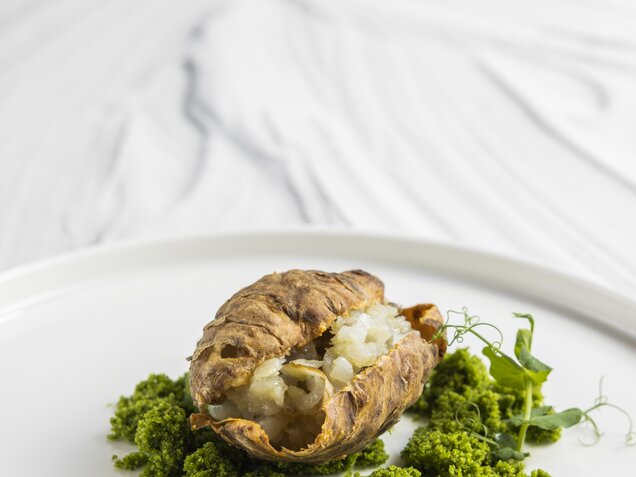Food Combining – Overcoming Challenges
Food combining stimulates fat metabolism, as carbohydrates and proteins are more easily digested when eaten separately. This form of nutrition can aid in weight loss, but it’s not always easy to follow when eating out or during a busy workday. Park Igls offers a few helpful tips to make it easier to navigate common challenges.
Was ist Trennkost?
What Is Food Combining?
The principle of food combining involves dividing foods into three categories: carbohydrates, proteins, and neutral foods. Carbohydrates and proteins should not be eaten together – for example, no fish or meat with potatoes. Here’s a simple rule of thumb: vegetables or salad (neutral foods) can be combined with either a) fish or meat (protein) or b) pasta, rice, potatoes (carbohydrates).
Examples of permitted combinations include pasta with tomato sauce, baked potato with yoghurt, fish with vegetables, or grilled chicken strips on leafy salad – but NOT roast pork with bread dumplings.
It’s important to note that all foods contain varying amounts of carbohydrates, protein, fat, and water. The predominant component determines which category a food belongs to. For example, yoghurt contains a balanced ratio of carbohydrates and protein, and is therefore classified as a neutral food. Quark (curd cheese), on the other hand, contains five times more protein and is classified as a protein-rich food. In case of doubt, a table showing the protein content of foods can help with classification.
Food Groups & Nutrients
Carbohydrates – Protein – Neutral
Neutral foods include fats and oils, nuts, milk, cream, yoghurt, egg yolk, vegetables, salads, and most fruits. Protein-rich foods include cheese, quark, egg white, meat, fish, and poultry. Protein is the most important nutrient for muscle and tissue development in the body.
Refined carbohydrates ("empty" foods) enter the bloodstream quickly and often lead to a deficiency in vitamins and minerals. The pancreas responds by releasing large amounts of insulin. A high insulin (blood sugar) level slows down fat metabolism, and the body soon reacts with hunger. Avoid sugar, white flour products, white rice, cakes, and processed foods. Choose complex carbohydrates instead – they are absorbed more slowly, provide lasting energy, and contain valuable fibre, vitamins, minerals, and trace elements. Examples include whole grains, wholemeal products, brown rice, wholegrain or soy pasta, wholegrain bread, legumes, and potatoes.
Based on Modern Mayr Medicine
Modified Food Combining
According to the traditional Hay diet, carbohydrates are generally not allowed in the evening. At the Park Igls Medical Spa Resort, a modified version is used: crispbread is served in the evening, as the small amount of complex carbohydrates has little effect on blood sugar levels and prevents hunger. High-quality, fresh foods, gentle preparation methods, the use of fresh herbs and spices, and minimal quantities of rich and sweet dishes – these principles are essential even when following food combining rules. It’s also especially important HOW you eat – thorough chewing and salivation – not just WHAT you eat!
Food Combining Tips for Eating Out
Helpful Advice
Very fatty foods such as bacon or high-fat cheese are considered neutral according to traditional Hay food combining rules. This might encourage the consumption of overly rich meals! It's important to consciously focus on a balanced, wholesome, and not overly heavy diet.
If you want to lose weight, eat fewer or no carbohydrates in the evening. A small, light meal is ideal to allow the digestive system to rest. While raw vegetables are not unhealthy, they are difficult to digest and can cause bloating, which can significantly disrupt the body’s ability to recover overnight.
In restaurants, it’s usually no problem to ask for extra vegetables or salad instead of a side dish like potatoes or rice.
Salad also makes a great light office meal. It’s best to bring your own dressing from home and mix it just before eating. Good additions include cheese, turkey ham, eggs, and olives.
According to a study, people who skip breakfast are more likely to be overweight – so skipping it offers no real benefit. Ideas for a healthy breakfast include: unsweetened muesli with raisins, grain porridge with a little honey, wholegrain bread (in moderation), radishes, cucumber slices, quark (curd cheese), and some fruit.
In small amounts, maple syrup, agave or pear syrup, and raisins can be used for sweetening. Caution: the new sugar substitute “stevia” – like artificial sweeteners – can increase cravings for sweets and should be used only very sparingly.








